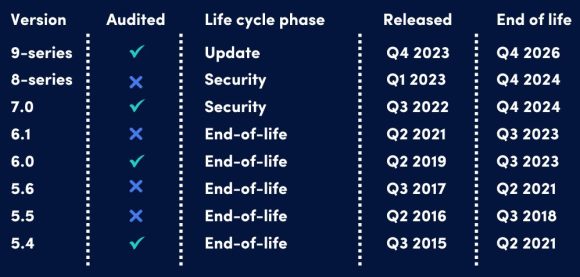BlueX Life Cycle and Supported Versions
The following information has been updated on December 12, 2023 . Please contact us if you have any questions.
Life Cycle

Releases
Three types of releases will become available during the life cycle phases of a BlueX-series. Which type of release can be expected depends on the life cycle phase.
Some notes up front:
The ‘version number position’ is the 3-digit version numbering scheme which is in effect as of the BlueX 8-series (8.0.0). Earlier versions of BlueX will continue to use ‘BlueX <version> Build <build number>’ until they are End-of-Life.
Minor and patch release types will be backward compatible and not break existing functionality (of the particular BlueX-series).
Every release is cumulative, it will always contain everything from preceding releases. I.e. a minor version released after a patch version (within the same series) will contain the fixes of that previously released patch version.
Major (n.0.0) release
The yearly release of a major version – with version number position n.0.0, i.e. 9.0.0 – is the initial release of a series. It adds and/or updates and/or removes functionality, and can contain breaking changes. It will always contain tooling and guidance to handle upgrading.
Minor (0.n.0) release
The occasional (no more than once per quarter) release of a minor version – with version number position 0.n.0, i.e. 9.1.0 – is a release that adds incremental improvements upon existing functionality and/or correcting existing functionality (bugfixes).
Patch (0.0.n) release
The ad-hoc (depends on frequence of security updates) release of a patch version – with number position 0.0.n, i.e. 9.1.3 – is a release that corrects existing functionality (bugfixes) and/or (urgent) vulnerability fixes/security patches.
A release type can be identified by the version number (position) as described in the table below.
Supported Versions/Series

